features
A Surgeon's Heart
Alumnus Craig Smith's journey to the operating
room—where he has performed countless lifesaving procedures, including one with two Secret Service agents standing by—was roundabout and remarkable
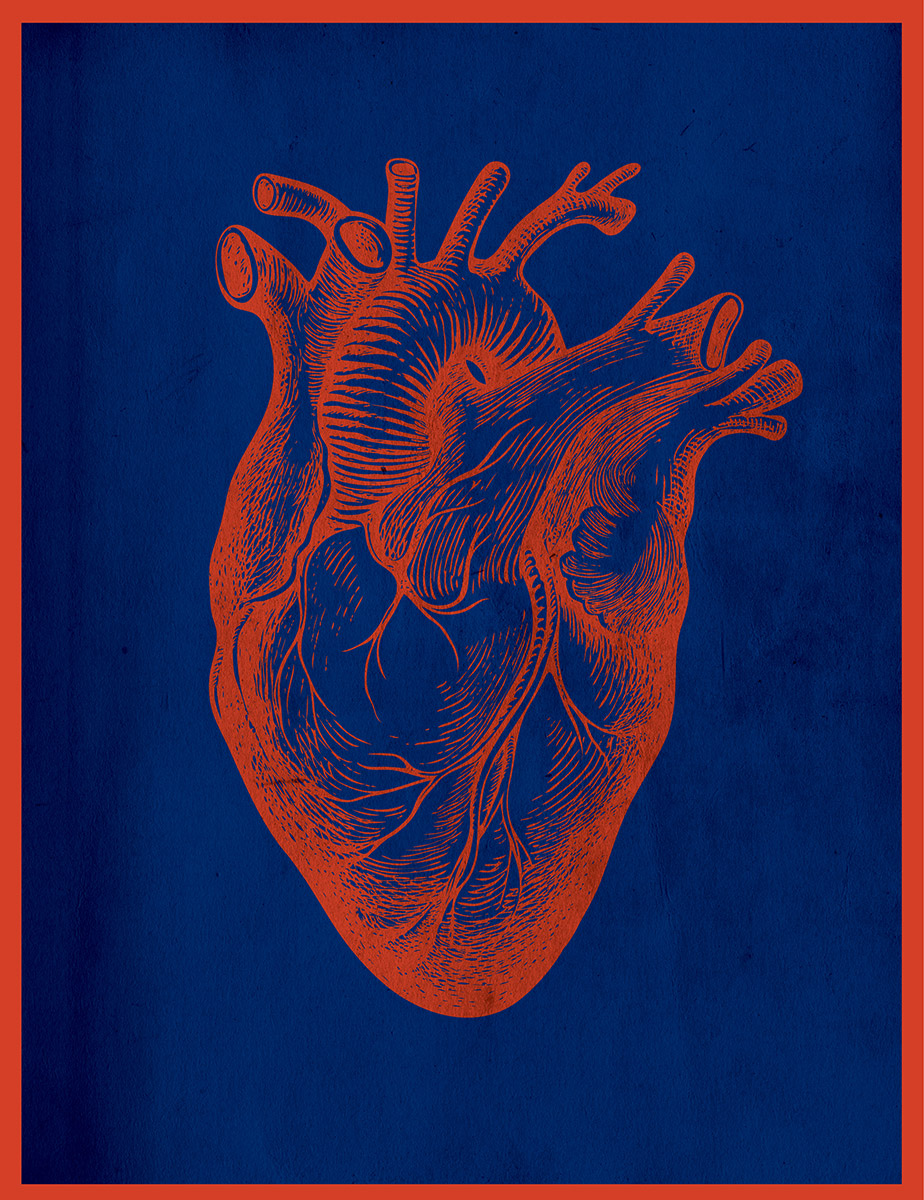
IMAGE: ISTOCK/PASEVEN
Before Craig R. Smith Jr., MD, operated on former President Bill Clinton's heart, before The Wall Street Journal heralded him as "the pandemic's most powerful writer," he was a onetime PhD student-turned-telephone lineman who had an epiphany.
He would go to medical school.
Smith applied to three. Lucky for the Cleveland native, the Case Western Reserve University School of Medicine sought "bent arrows"— applicants with untraditional backgrounds who brought diverse life experiences to the program. When the acceptance letter arrived in 1973, "I was on my way to the rest of my life," said Smith (MED '77), who also had family ties to CWRU.
That moment represented one more turn in Smith's circuitous journey, which wound through the bowels of a Pennsylvania steel mill to the top of 40-foot utility poles in Vermont. But it also marked the beginning of his ascent in the elite field of cardiothoracic surgery.
As longtime chair of the surgery department at the Columbia University Vagelos College of Physicians and Surgeons and surgeon-in-chief at the Vivian and Seymour Milstein Family Heart Center at New York-Presbyterian Hospital/Columbia University Medical Center, Smith has performed thousands of heart procedures—including Clinton's quadruple coronary bypass surgery in 2004—and helped pioneer the field of cardiac transplantation.
He has held people's hearts in his hands, both as a surgeon, massaging the organ to raise a patient's blood pressure, and as a hospital administrator, writing introspective and intimate daily email updates to more than 500 colleagues during the earliest, bleakest days of the pandemic.
Inspired by those 59 consecutive dispatches, touted in a Wall Street Journal feature story, Smith spent the next year crafting his memoir, Nobility in Small Things: A Surgeon's Path. The title is a poetic turn of phrase plucked from one of his updates to describe the dignity and grace healthcare workers exhibited amid unimaginable despair.
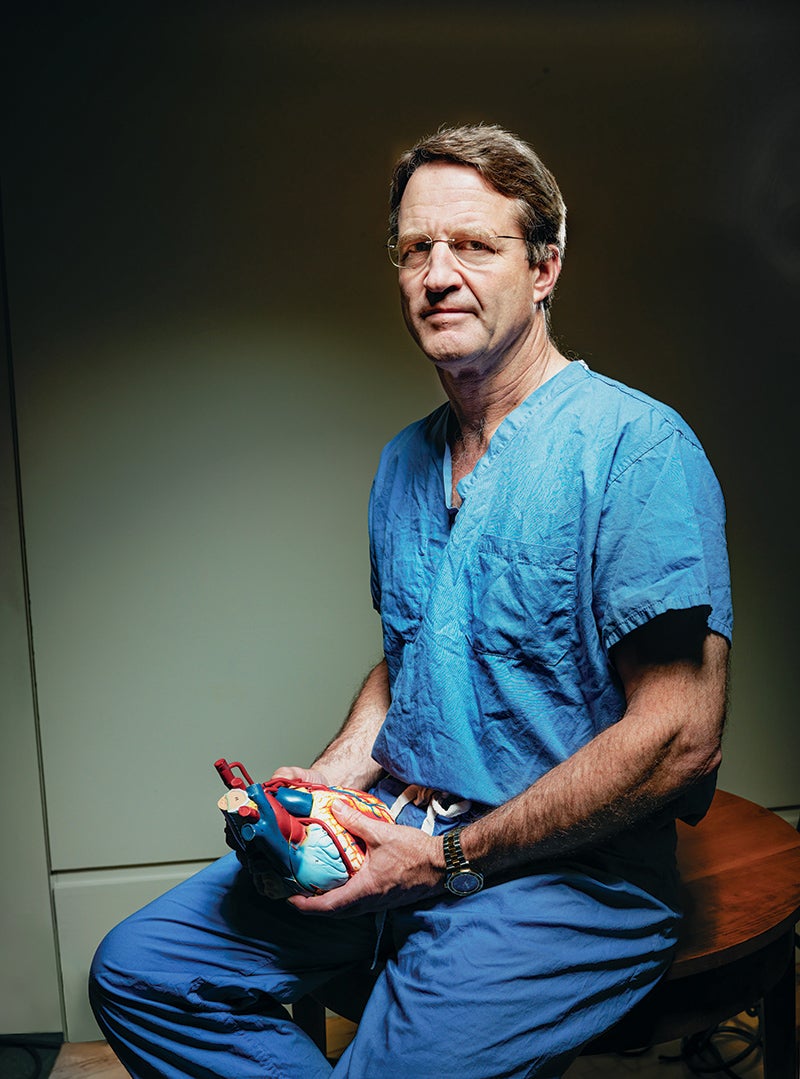
PHOTO: JOHANN SEBASTIAN HANELCraig Smith
Released in October 2023, the book chronicles not only the making of a surgeon but the maintenance of one—the deep feeling and moral philosophy that anchor the daily miracles that define Smith's profession—and the people and places that shaped both his journey to the operating room and his rich life outside of it.
"I see my life as the [culmination] of lots of little pieces," said Smith, 75, from his office, which overlooks the George Washington Bridge. Smith is not one for "chit-chat," according to his wife, Patricia McGuire Smith, JD (Law '77), so the details of that remarkable life unfolded less in interviews and more through his memoir. "The book is about how I got to be the person who has the privilege of doing the things I get to do—and the meaning of those things," Smith said.
It's a story that opens, fittingly, with a visit to the doctor's office.
THE FAMILY BUSINESS
As a toddler, Craig Smith was accident-prone. Worried that he was crashing into furniture because of impaired vision, Craig R. Smith Sr. (CIT '45), a Navy Reservist who worked in manufacturing, and his wife, Mary, a homemaker who later became a teacher, took their second-born to see an ophthalmologist. After watching the fearless tot race around his office, the doctor reported that Smith's eyesight was fine. The boy "just [didn't] give a damn."
Smith's childhood was marked by moves to various cities as his father rose through the ranks at Warner — Swasey Co., a machine-tool maker, eventually becoming chairman and CEO.
It was also a childhood dominated by sports—football, wrestling, basketball, lacrosse, track and field—and punctuated by injuries: a fractured ankle, a torn ACL, two shattered wrists, three broken noses, myriad broken fingers and countless stitches.
A "frequent beneficiary of the healing arts," Smith made regular trips to the emergency room, which sparked an early interest in and deep respect for what would become his life's work.
"I was the world's best patient," Smith wrote. "Hospitals never scared me; they felt safe and comforting."
So, too, did his maternal grandparents' elegant home in Cleveland Heights, Ohio, filled with the tools of their shared trade: medical journals, stethoscopes and stainless-steel surgical instruments.
Donald Glover was a renowned pediatric plastic surgeon, while his wife, Leona van Gorder Glover, MD, (MED 1924), was an early graduate from what's now the CWRU School of Medicine, where she later taught anatomy for three years. At his grandmother's suggestion, 8-year-old Smith used the needles and syringes from her home office to practice injecting water into oranges so that he could give himself his next vaccination.
"Did a sliver of an arc bending toward heart surgery begin for me there?" Smith wrote. "Without a doubt."
The summer of his sophomore year at Williams College in 1967, Smith and his buddies began working at the Alan Wood Steel Co. along the Schuylkill River outside Philadelphia, where his family had moved just a few years before. As a lowly belt cleaner, Smith toiled far underground, retrieving the raw coal that rolled off a "massive sifting machine" on its way to the coke ovens.
The union wages were good, but the work was dark, dirty and dangerous—even more so the following summer, when Smith was promoted to a "lidsman" on the coke battery. Wearing a welder's mask and wooden clogs over his work boots to keep his feet from burning on the 135 degree surface of the ovens, he opened and closed the lids after a locomotive-sized coal car made its deposits.
On the last shift of the summer, Smith—known as "Professor" among the workers for always having his nose in a book on break—became wedged between the coal car and a brick wall and fell first into a recess and then to the ground. Smith fractured his pelvis, ending his college football and lacrosse careers. The broken bones would heal, but the incident jolted him in a way that has lasted a lifetime.
"The reality was that I would go back to my elite college in Massachusetts, compounding the interest on my gifts and privileges, when few of [my coworkers] would ever make deposits in that bank," he wrote.
A BENT ARROW
Smith's career on the gridiron was over, but in 1969 during his junior year at Williams, the former quarterback made a play for Trish McGuire. She was one of three-dozen Vassar students spending a semester in Williamstown. Smart, driven and athletically gifted in her own right, Trish wed Craig a few months after they graduated.
"We got married very young and we grew up together," she said. "That either bonds you or it tears you apart."
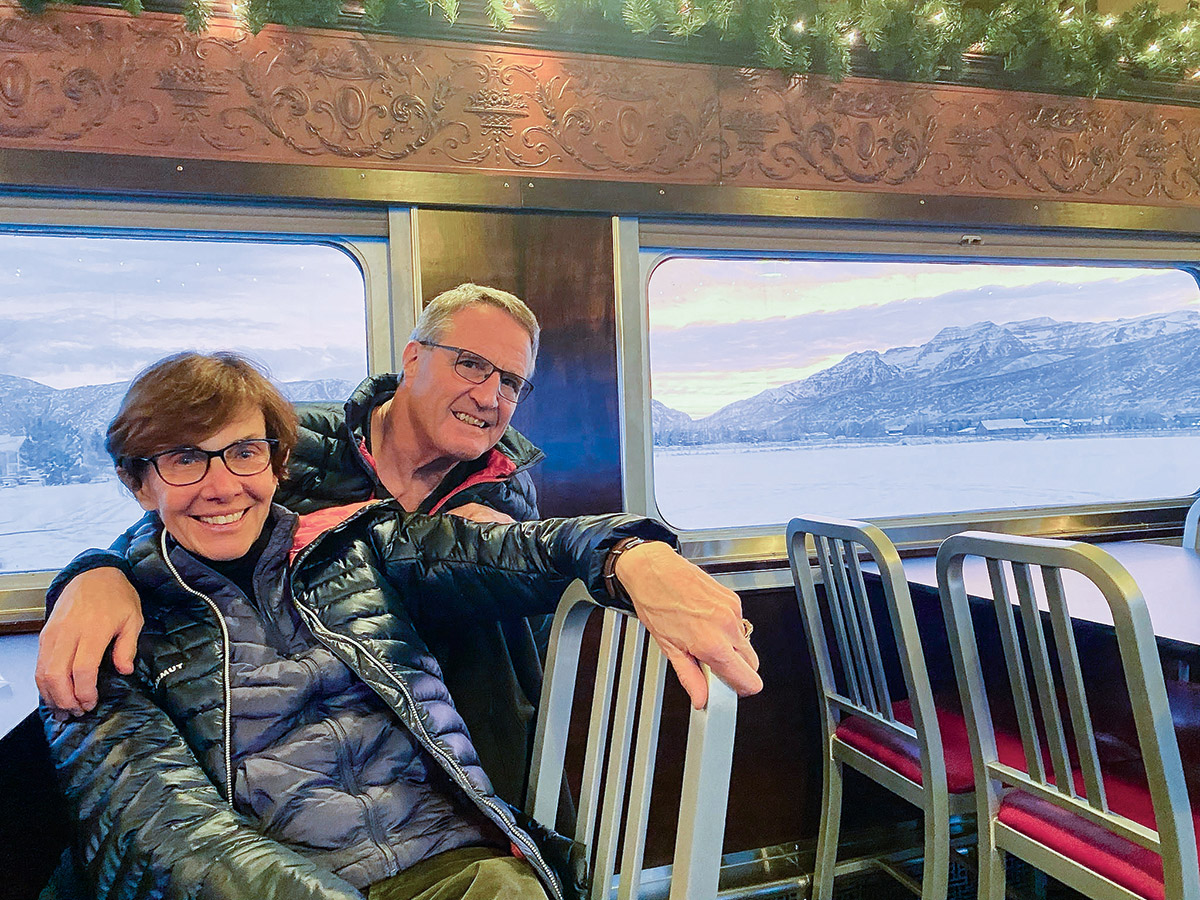
PHOTO: Courtesy of Craig SmithTrish and Craig Smith traveling by train through Utah
Smith had been pre-med for three years at Williams, but a class in experiential genetics during his senior year sparked an intense—albeit short-lived—fascination with ecology. "Put simply, I was seduced by the art in science," he wrote.
When Craig decided to pursue his doctorate at Dartmouth College—a misstep, but one that ultimately reoriented him—Trish, who had been accepted at the University of Virginia School of Law, put her own studies on hold to support her new husband. From the start, Trish said, the couple understood marriage was built on compromise.
And yet, Craig worried he was compromising his integrity by remaining in a program he knew was a bad fit. He felt himself "deviating from my own professional true north, a barely perceptible few degrees at a time," and finally faced the cold, hard truth while lying on the cold, hard floor of a Dartmouth College lab during his second year as a biophysics doctoral student. Craig Smith decided that he just didn't give a damn.
After 14 months as a telephone lineman, a stopgap job after dropping out of Dartmouth, Smith enrolled at CWRU's School of Medicine in fall 1973, lured in part by its reputation and his family ties to the university and Cleveland.
Five decades on, the amateur organist still isn't sure if the application essay he penned on chiff—"the brief burst of upper harmonics that occurs when a pipe first speaks"—was an act of "innocence, arrogance or stupidity."
The school "was known for being a place that didn't specialize in this sort of rubber stamp, straight-through-college-to-medical-school type of student," Smith said. "I thought, 'Maybe this is an [opportunity] to show something a little different.' The prompt was something like, Tell us what interests you. And, at the time, nothing interested me more than playing the organ."
He was just the type of nontraditional student who caught the eye of Jack Caughey, MD, the medical school's first assistant dean of students, who coined the term "bent arrows" and pioneered the recruitment of such nontraditional applicants.
Like Smith, Dan Wolpaw, MD (MED '77), was an older, married student. He came to CWRU from Amherst College and had spent an extra year teaching school in the United Kingdom. The pair bonded over the lab bench, next to which Wolpaw mounted a dartboard.
"I would often find Craig in the lab, reading Harrison's Principles of Internal Medicine or a pathology text or spending extra time with our cadaver dissection," recalled Wolpaw, a recently retired professor of medicine and humanities at Penn State College of Medicine. "Craig took a deep, expansive view of his learning" and carried himself with a quiet confidence, Wolpaw said. And even amid a sea of Type A personalities, Smith "seemed most interested in satisfying his own inner drive to dig in—whatever the topic."
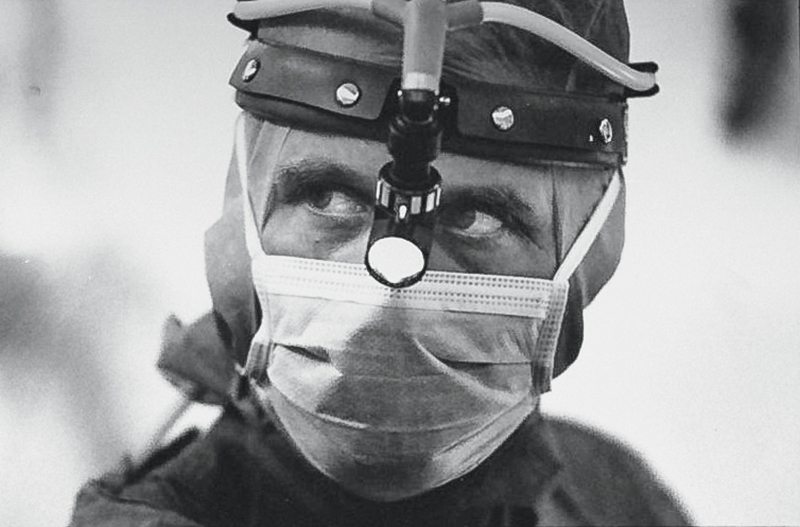
PHOTO: STEVE KAGAN/GETTY IMAGESCraig Smith before a surgery on a patient who had a brain aneurysm.
"Medical school was the easiest four years of my life," Smith wrote in his book. "I studied pleasurably and without compromise."
So, too, did Trish, who finished law school in 1977, the same year Craig completed medical school—and just one semester after the couple welcomed baby Emily, the first of four girls. (Their third daughter, Lydia, died of sudden infant death syndrome in 1984.)
Following the advice of a senior resident, who told him that training in surgery is "legendarily arduous and comparatively dull," but the practice of surgery "is progressively more exciting," Smith was matched with a general surgical residency at Strong Memorial Hospital at the University of Rochester.
He had toyed with following his grandfather into plastic surgery or orthopedics, but the first time he scrubbed in on a cardiac surgery case, Smith was hooked. "It was bold and complex; there was risk, every stitch seemed to matter and feedback was immediate," he wrote. "Get it right or the patient might not leave the room alive."
VIP IN THE OR
In 1982, Smith began his cardiothoracic surgical residency at Columbia Presbyterian Medical Center. By 1996, he was chief of cardiothoracic surgery, and nine years later was named chair of the Department of Surgery.
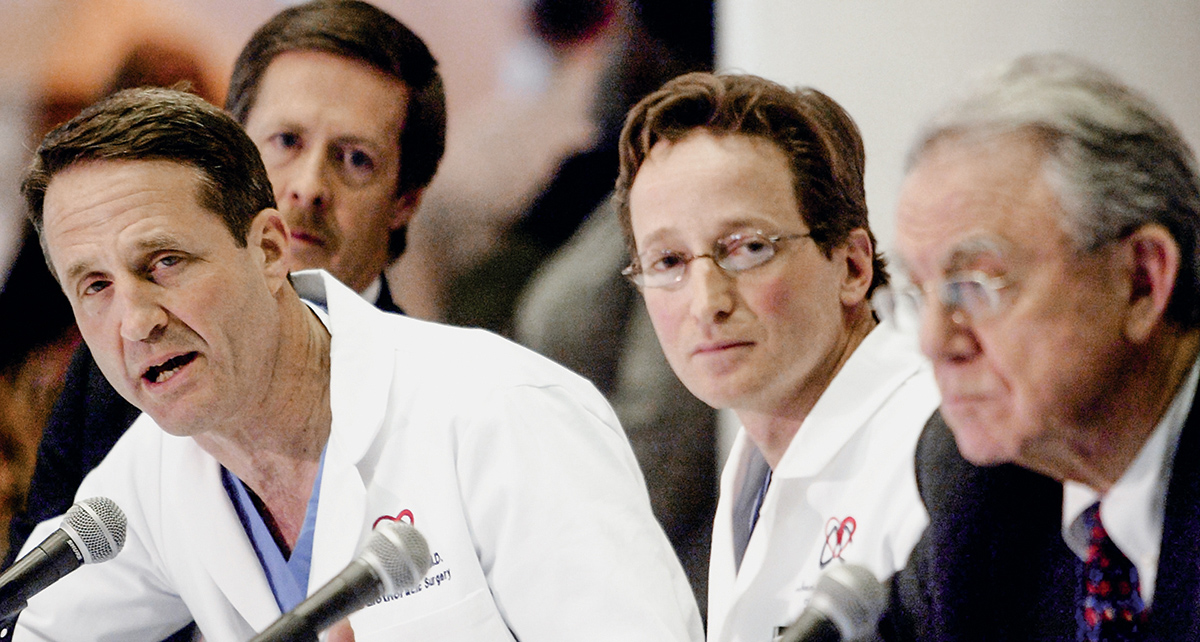
PHOTO: Stephen Chernin/Getty ImagesCraig Smith (left) speaks alongside colleagues at a press conference in New York City after operating on former President Bill Clinton
Smith was thrust into the spotlight in September 2004 when he performed a four-hour open-heart procedure on Clinton—with a pair of Secret Service agents in the operating room. It was just three days after the former president complained of chest pains and tests revealed four severely clogged arteries.
Clinton was both an extraordinary patient and an ordinary one, and the procedure itself was entirely unremarkable—which is always good in Smith's line of work. "A VIP with straightforward anatomy can be more routine than someone who isn't famous but has more challenging anatomy," he wrote of the former president's surgery.
Smith, who chronicled his experience with panic attacks and social anxiety in the book, weathered the media frenzy well. But he was relieved when he was finally able to reapply his surgical mask and get back to work in relative anonymity.
"Craig is the most transparent person I've ever known. What you see is what you get," his wife of 54 years said. "He's devoted to his patients and to excellence in his job. He loves his kids and he adores his grandchildren."
Nobility in small things.
Like in 1972 when he had his epiphany. Smith was pulling out of the telephone crew garage in White River Junction, Vermont, when singer Johnny Nash's smooth, emotive high tenor wafted from Smith's Datsun radio:
I can see clearly now the rain is gone ...
It's gonna be a bright (bright) / Bright (bright) sunshiny day.
Smith realized in that instant that the time for medical school had arrived.
More than 50 years later, Smith—the man who has trained more than 43 cardiothoracic surgery residents, co-authored more than 175 publications and performed lifesaving operations on thousands of patients, from infants to gunshot victims to a former president—can't hear Nash's joyful tune "without remembering that sunny day ... and smiling because I knew I had a plan."
FOUR GENERATIONS OF CAMPUS TIES
More than 75 years before Craig R. Smith Jr. came to CWRU, his family ties to the university and its predecessor schools began.
Arthur Adelbert Stearns, a great-grandfather of Craig Smith, taught part time at Western Reserve University (WRU) School of Law from 1894 to 1906.
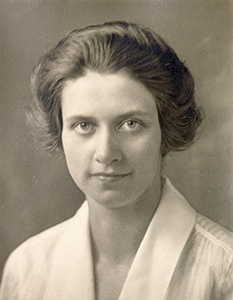
PHOTO: IMAGE 08051, CWRU ARCHIVESLeona van Gorder Glover
Helen Stearns Smith (FSM 1914), Arthur's daughter, majored in Romance languages.
Wilbur Thomas Smith (ADL 1913, LAW 1915), Helen's husband, earned his undergraduate and law degrees at WRU.
Leona van Gorder Glover (MED 1924), Craig's maternal grandmother, was among the first 20 women to graduate from the WRU School of Medicine.
Craig R. Smith Sr. (CIT '45), son of Helen and Wilbur, majored in mechanical engineering and is an emeritus trustee of Case Western Reserve. He served on the university board from 1979 to 1995.
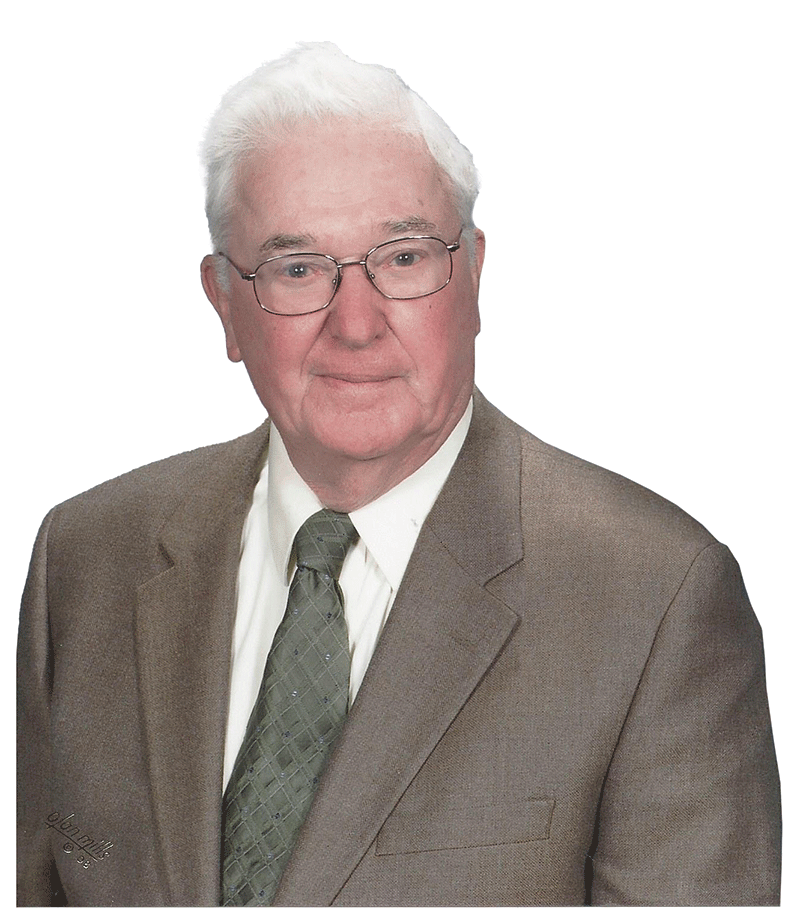
Craig R. Smith Sr.
Craig R. Smith Jr. (MED '77), heart surgeon. "Not many families have that kind of linkage to any university," said Craig Smith Sr.





